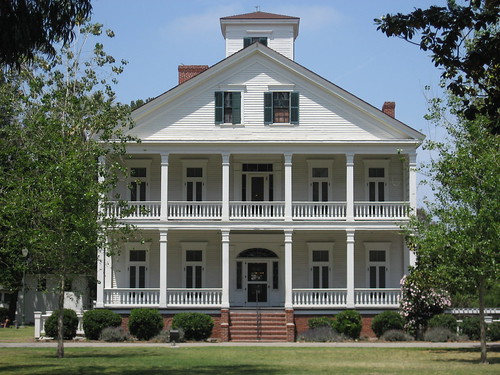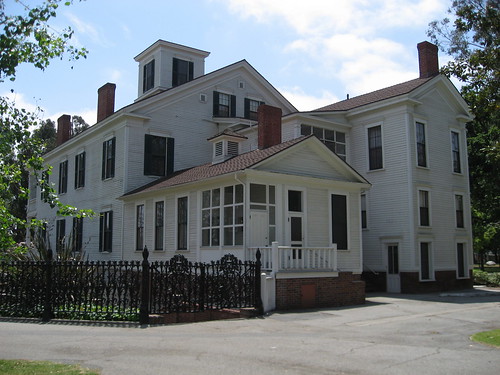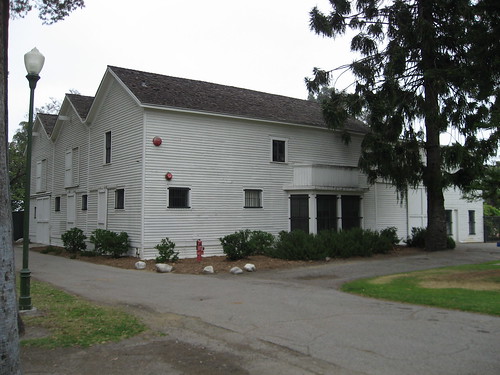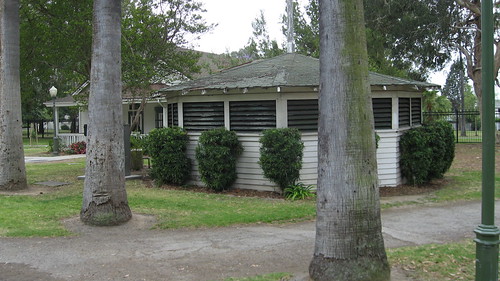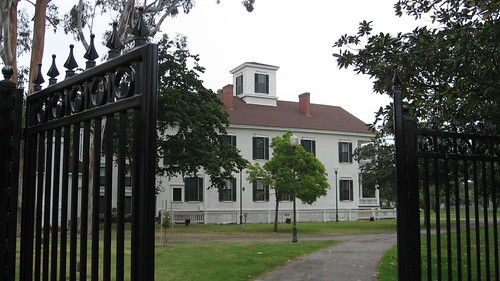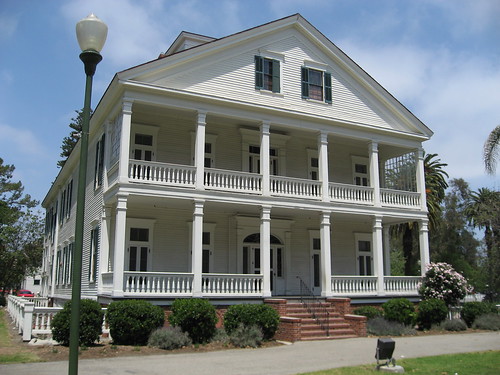General Phineas Banning Residence
1864
401 East M Street, Wilmington – map
Declared: 10/11/63
Folks say they can’t imagine a better example of Greek Revival architecture in Southern California, and I can’t imagine a Los Angeles building built in 1864 in this good of shape.
Phineas Banning was a Delaware boy, born in 1830. After a few years at his brother’s law office and some dockworking in Philadelphia, he went west at the age of 21. (Well, not straight west. He first sailed to Panama, then cut across the Isthmus, and finally took a boat up to San Pedro).
The enterprising Banning made his first fortune in the staging and freighting business. In 1857, he bought some land above San Pedro, creating a landing and monopolizing the business in the harbor. The next year he and his partners founded New San Pedro on 640 acres. In the early 1860s, Banning was the sub-contractor in setting up the first telegraph line between the town and L.A. He renamed New San Pedro in 1863 after his hometown in Delaware – Wilmington.
During the Civil War, Banning, a rabid abolitionist, and a business partner sold a chunk of land to the Union Army getting $1 a piece. (The pair later were returned the land, buying a bunch of Camp Drum’s buildings in the process.) Banning was then commissioned with the honorary title of General in the California State Brigade of the National Guard.
At the end of the war, he was appointed president of the Pioneer Oil Company. He then served as California State Senator from 1865 – 1868, during which tenure he took part in California’s ratification of the 13th Amendment.
There used to a fountain here in front of this below-ground-level door. Coaches would pull up (down?) here dropping off and picking up guests.
Banning played the good guy in giving up the Los Angeles and San Pedro Railroad – not only the first railroad in Southern California (given the go-ahead in 1868) but also a vital (and lucrative) 21-mile link between L.A. and Banning's Landing – to the Southern-Pacific Railroad. Without that link, the SP would’ve bypassed L.A. in favor of San Bernardino.
You can see where the original home ends and where the later additions start.
Phineas Banning spearheaded the charge to get the government to fund the 1871 dredging of San Pedro Bay, then building a breakwater (closing the gap between what were then known as Rattlesnake and Dead Man’s Islands) in making the Port of Los Angeles.
The stagecoach barn, part of the tour except when I'm there.
In 1885, the indefatigable Banning, “The Father of Los Angeles Harbor”, ultimately proved very fatigable, dying in March from results of being hit by a San Francisco streetcar the previous summer.
His sons, William, Joseph, and Hancock, bought Catalina Island in the early 1890s, owning it until World War I.
The site's first structure, the pumphouse. The land was extra soggy, so besides this, there were tons of eucalyptus trees planted to soak up the groundwater.
Oh. The Landmark. Built during the Civil War, the residence stayed in the Banning family until 1927, when the city bought it along with the surrounding twenty acres. Tours are now offered of the site, which is now a museum. The drag is that when I was there, our group got a walk-through of the house only. I found out later that the park’s one-room schoolhouse and stagecoach barn should’ve been included on the tour. But they weren’t. If you go, make sure you get a look at them.
The Banning Residence is also a California landmark and is on the National Register of Historic Places.
Up next: The First Cemetery of the City of Los Angeles
